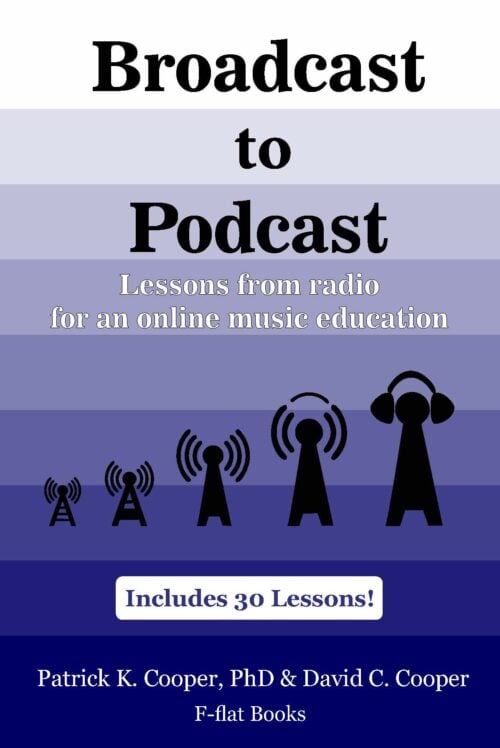-
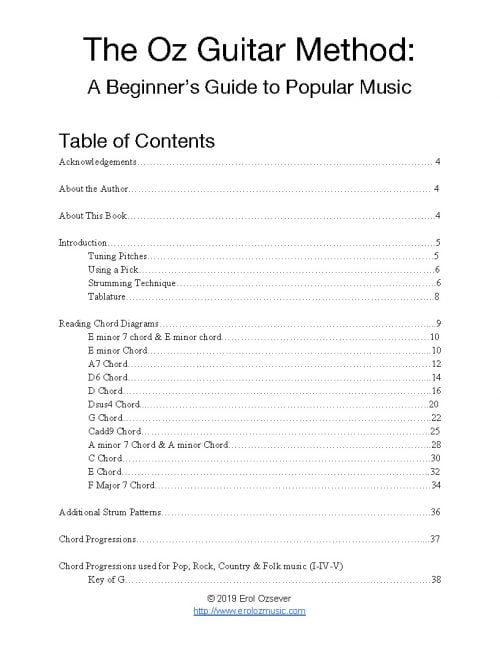
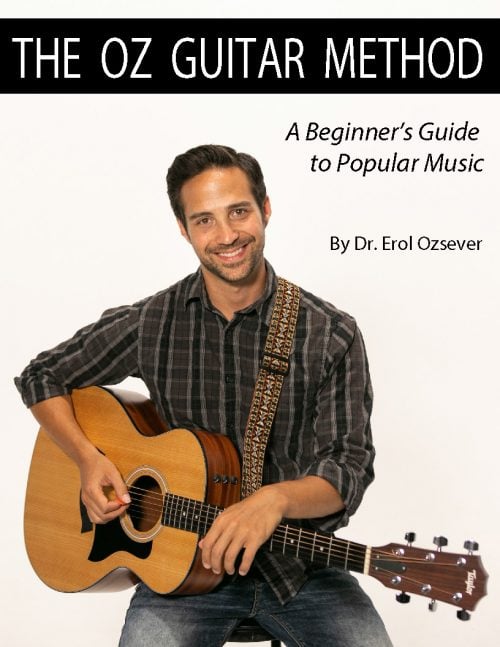 Purchase this with "The Oz Ukulele Method" using the code "theozmethod" at checkout to receive $5 off! This is an eBook for digital download. This beginning method book teaches chords and strumming for accompanying popular music. The curriculum is based on research in motor skill learning and is accessible to anyone wanting to learn to strum popular songs. The book includes online video and audio companion.
Purchase this with "The Oz Ukulele Method" using the code "theozmethod" at checkout to receive $5 off! This is an eBook for digital download. This beginning method book teaches chords and strumming for accompanying popular music. The curriculum is based on research in motor skill learning and is accessible to anyone wanting to learn to strum popular songs. The book includes online video and audio companion. -
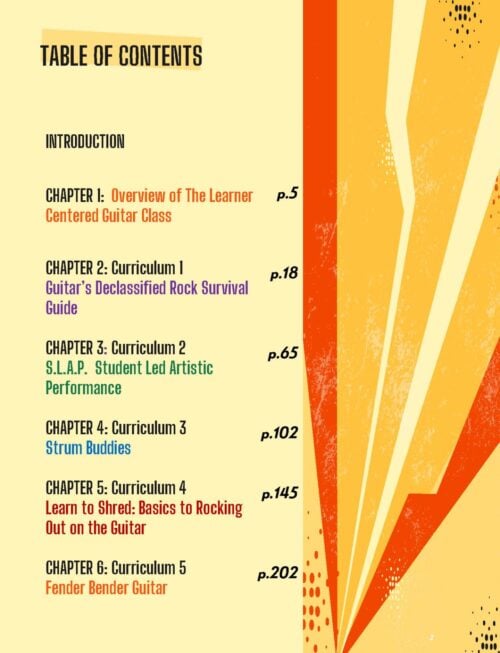
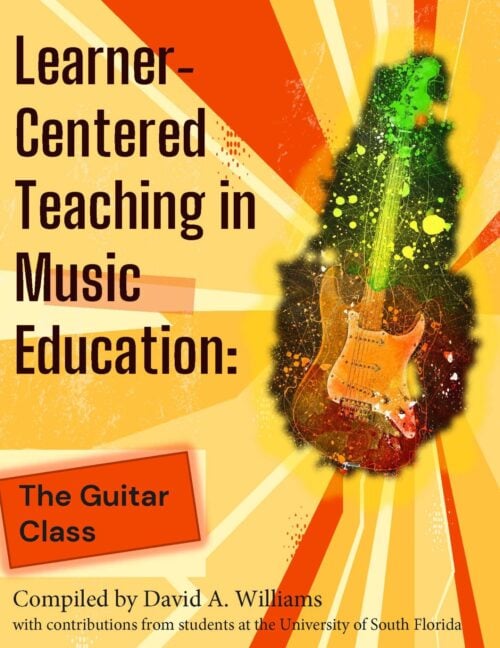
Compiled by David A. Williams
( 459 pages) This is an electronic resource for digital download. This book contains ten curricular settings for guitar classes that are based on learner-centered pedagogical principles. Each class example was created by a pair of undergraduate music education students who were enrolled in a music education methods class designed to build skills in learner-centered techniques. These students were also co-enrolled in an ensemble course where they put their understanding into practice. In addition, they worked with k-12 students in learner-centered practicum settings. While the students lacked full-time teaching experience they were certainly grounded in learner-centered pedagogical concepts. Our hope is that music teachers, at all levels, will find ideas and inspiration in this book. Ideas and inspiration for interesting new music classes that include guitars, and for ways to enhance existing guitar classes. Ideas and inspiration that will stimulate students and help them grow into lifelong music makers. -
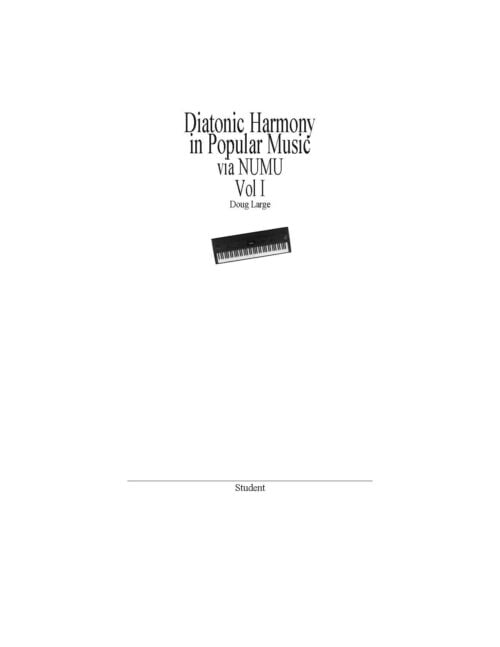
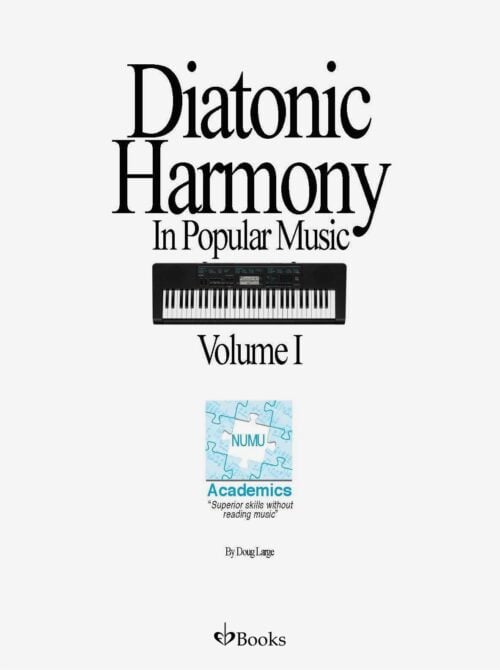
by Doug Large
(60 pages) This is an eBook for digital download. Harmony and Composition made easy with NUMU is designed for the academic calendar with exercises, tests, mid-year and final exams. Once a musician understands even a little harmony (how chords are built) and composition (how chords fit together), it sets them free. An in depth study of Harmony & Composition from a ground-breaking, simplified perspective. Music is based on interval formulas. Only NUMU (Number Music) can clearly illustrate these formulas. This eBook comes with a separate PDF containing midterm and final exams! -
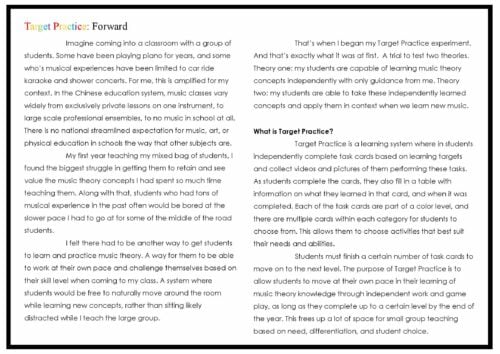
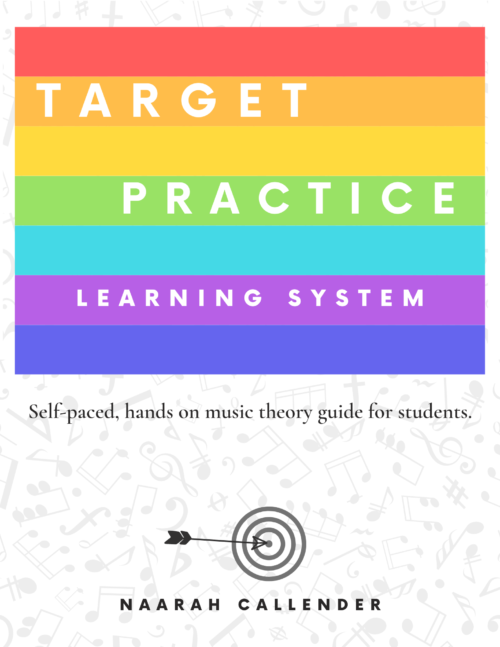
by Naarah Callender
(43-page teacher guide with 100 student cards) This is an e-book for digital download. Purchase includes PDF and PowerPoint files. Target Practice is a completely self-paced and flexible learning system, allowing students to learn and retain music theory concepts in an engaging and organic way through activities, games, and exploration. Students work through learning targets at their own pace to level up and improve their ear-training, sight-reading, rhythmic, and melodic skills. This is perfect for any secondary level course! -
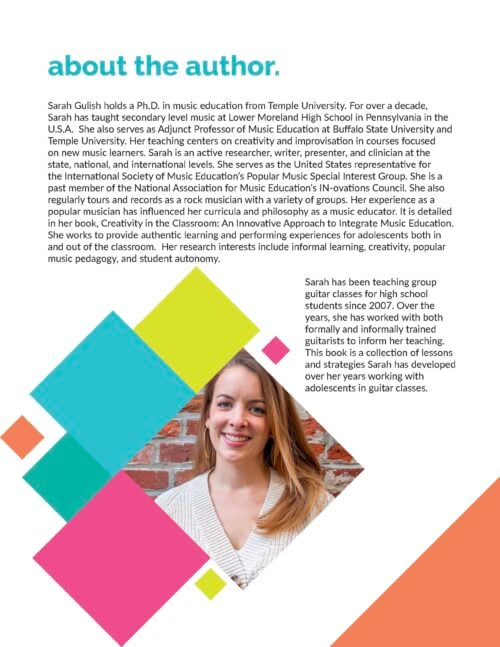
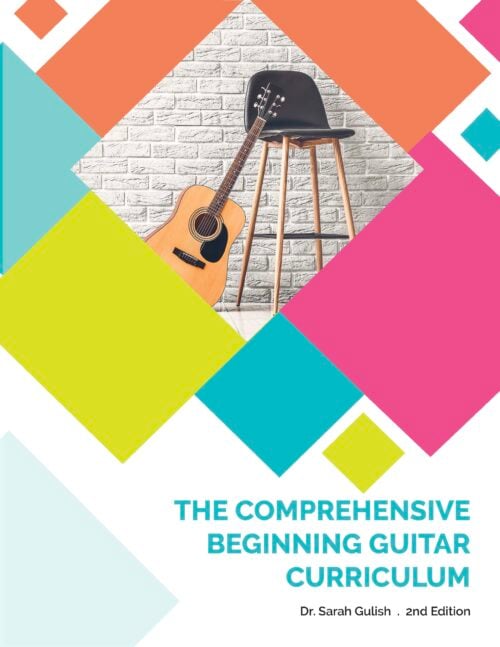
by Sarah Gulish
(37 pages plus video tutorials and handouts) This is an eBook for digital download. The Comprehensive Beginning Guitar Curriculum is a must-read for any music educator tasked with teaching a modern guitar class. This detailed text provides philosophy, unit plans, and resources for the development and execution of a relevant and engaging guitar program. The second edition includes updated visuals and curricular extensions. -
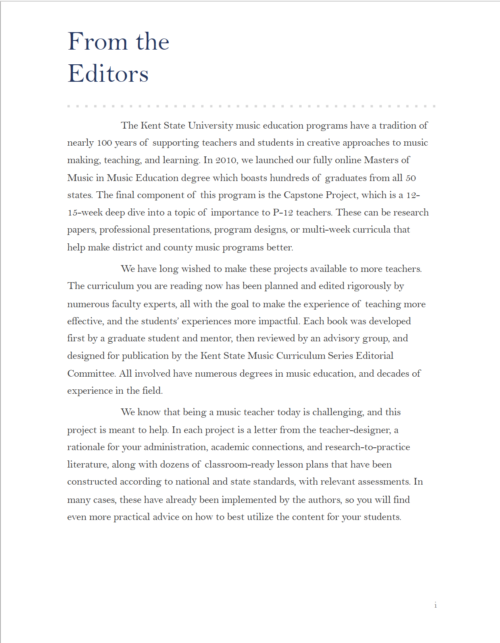

by Chelsea Perrine
(65 pages) This is an eBook for digital download. In this book, you will find research to support a well-rounded and focused education for music students with special needs, templates for goal tracking and lesson planning, and suggestions for lessons and units for your students. This adaptive music curriculum is geared towards secondary-level students. This is the second publication in the Kent State Curriculum Series. -
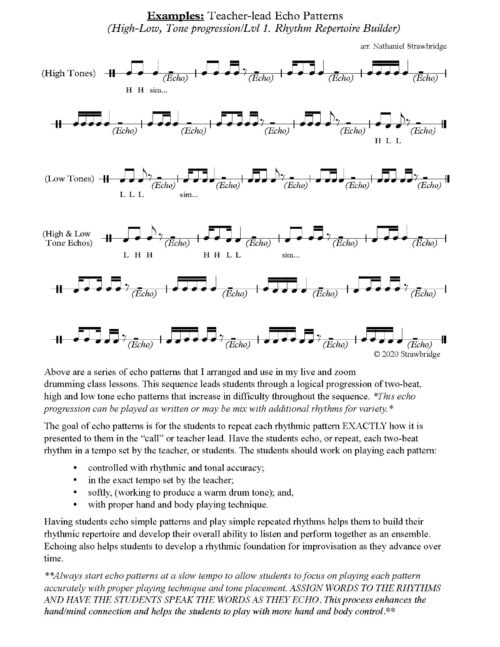

by Nathaniel Strawbridge
(19 pages) This is an eBook for digital download. This eBook provides resources and visuals to "keep the drumming" alive in the music curriculum, whether in-person or virtual. Through the lens of Sinte drumming, Nathaniel Strawbridge provides teachers with the tools they need to facilitate drum circle instruction and encourage proper playing technique and sound production through helpful diagrams and a cultural-historical context. -
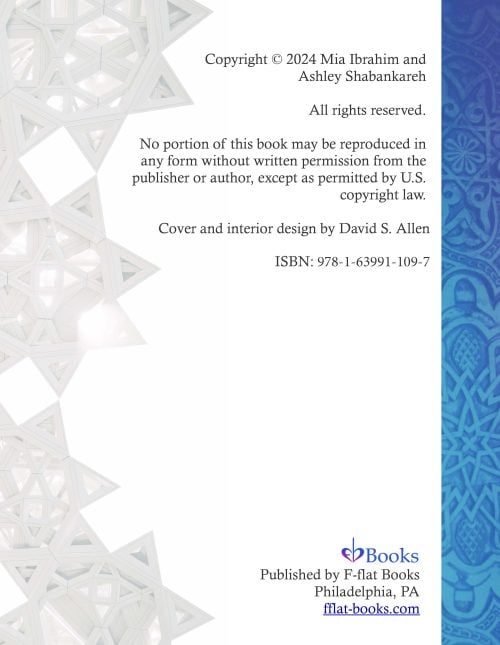
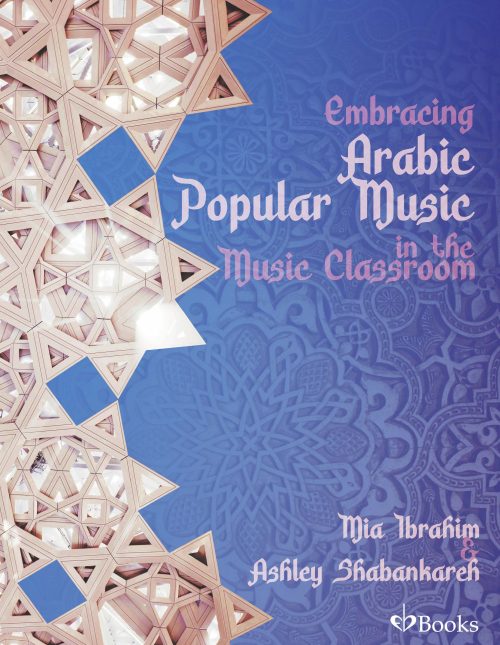 How do you incorporate Arabic popular music into the classroom? This comprehensive guide provides research, strategies, and practical steps for singing, dancing, and playing popular Arabic music with your students. Created by Mia Ibrahim with contributions from Ashley Shabankareh and F-flat community members, this resource is being released to honor the life and work of Mia. Proceeds from this resource will go towards the Mia Ibrahim Scholarship Fund, providing tangible opportunities for music educators to experience and learn how to incorporate popular music in their classroom through professional development opportunities.
How do you incorporate Arabic popular music into the classroom? This comprehensive guide provides research, strategies, and practical steps for singing, dancing, and playing popular Arabic music with your students. Created by Mia Ibrahim with contributions from Ashley Shabankareh and F-flat community members, this resource is being released to honor the life and work of Mia. Proceeds from this resource will go towards the Mia Ibrahim Scholarship Fund, providing tangible opportunities for music educators to experience and learn how to incorporate popular music in their classroom through professional development opportunities. -

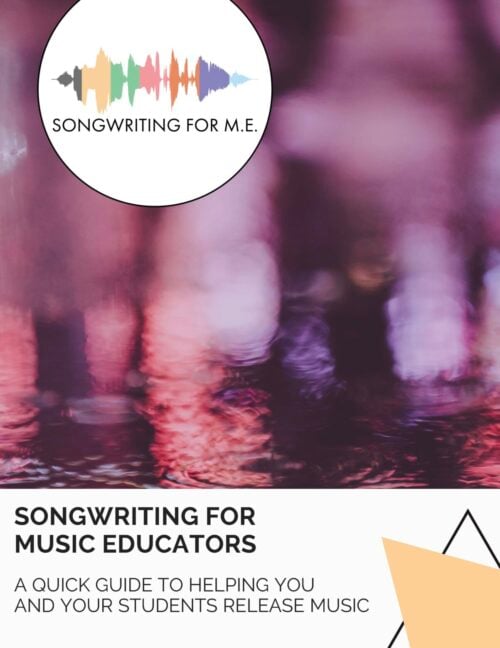
by Kat Reinhert and Sarah Gulish
This is an eBook for digital download. If you have ever thought about releasing original music but don't know where to start, this resource is for you! Whether creating your own music or helping students release their own, this quick guide has ten steps for everything you need to release original music from the authors of Songwriting for Music Educators. -


by Benjamin Taylor and Joseph Sowa
(23 pages) This is an eBook for digital download. Creativity and collaboration in the classroom is easier and more fun than you might think. The creative exercises and improvisational games collected in Teaching Music Creativity were designed to help students of all abilities feel comfortable in improvising and creating new music. They have been road tested by the Music Creators Academy and are now being used as a resource by band, choir, and orchestra directors with great success. -
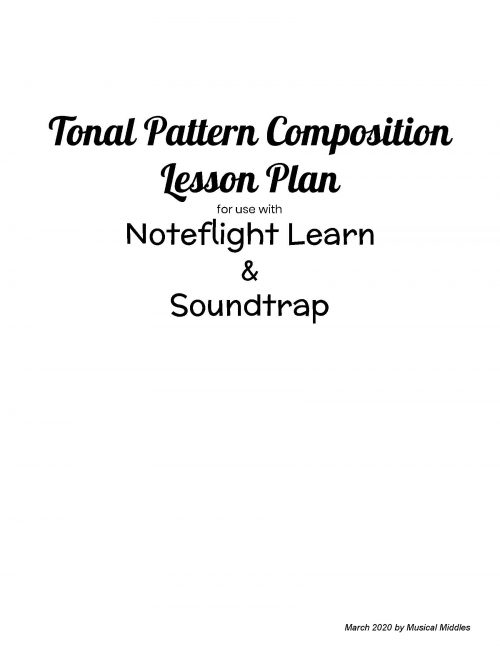 This is a digital resource. This resource is intended for choral music classes and can be used either in person or through virtual instruction. Students select tonal patterns from their assigned repertoire, compose a new pattern in Noteflight, and transfer that pattern to Soundtrap for extension activities.
This is a digital resource. This resource is intended for choral music classes and can be used either in person or through virtual instruction. Students select tonal patterns from their assigned repertoire, compose a new pattern in Noteflight, and transfer that pattern to Soundtrap for extension activities.


